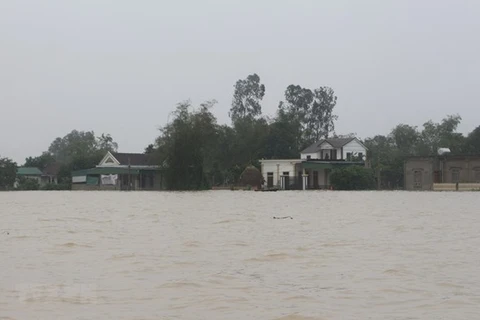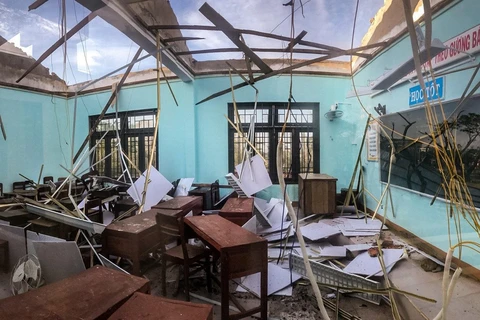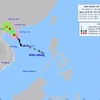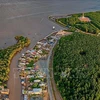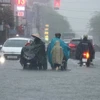 The Hieu River has been in full spate, causing widespread flooding in Cam Lo district of the central province of Quang Tri (Photo: VNA)
The Hieu River has been in full spate, causing widespread flooding in Cam Lo district of the central province of Quang Tri (Photo: VNA) Hanoi (VNA) – Scientists from the World Weather Attribution (WWA) group have agreed to conduct a detailed study of the extreme rainfall in Vietnam, largely the result of tropical storms, according to the International Federation of Red Cross and Red Crescent Societies (IFRC).
Reports say extreme rainfall has now disrupted the lives of some 1.5 million people in the Southeast Asian country.
The work was getting underway this week with “weather event definition” – the precise setting of the parameters in space and time of the rainfall episode being studied and the data associated with it.
The scientists’ conclusions on the extent to which climate change has had a hand in the latest extreme weather phenomena hitting Vietnam are expected to be released in about a month.
Earlier studies of extreme rainfall by the WWA group included, last year, Tropical Storm Imelda in Texas, extreme seasonal rainfall in Japan and the Indian state of Kerala in 2018, and floods in Bangladesh in 2017.
The IFRC said that the Hieu, Bo, Gianh and Kien Giang rivers all “reached historically high levels, and in some locations floodwater exceeded the previous historical highs recorded in 1979 or 1999”.
Since October, back-to-back storms and floods with widespread and intensive impacts have occurred in the central region of Vietnam, leading to particularly serious consequences.
Typhoon Molave was the most recent storm to make landfall in central Vietnam last week, the ninth to enter the East Sea this year, and it was followed weeks of torrential rain and landslides.
The consecutive storms and floods that are recorded for the first time in many years have caused huge losses of lives and property and severely affected the life and economic activities of millions of residents in central localities.
As many as 235 people have been killed or gone missing, including 80 deaths as a result of Typhoon Molave, while more than 201,000 houses have collapsed or been damaged or had their roofs blown away, including over 177,000 houses during Molave.
Downpours and floods have also triggered the slide of over 1.8 million cub.m. of land, including 744,000 cu.m. as a result of Molave, blocking a number of arterial roads and hampering search and relief efforts.
Economic losses are estimated at around 17 trillion VND (735.3 million USD), including more than 10 trillion VND lost due to Molave, not to mention a large number of destroyed infrastructure facilities.
The IFRC quoted President of the Vietnam Red Cross Society Nguyen Thi Xuan Thu as saying that: “We are heartbroken by more tragic loss of life as this typhoon has brought further misery and hardship to hundreds of thousands of people.”
“Red Cross relief teams are working non-stop to rescue people and provide critical relief as hundreds of thousands of lives have been turned upside down, with so many homes and livelihoods devastated in this massive storm,” she added.
Nguyen Hung Ha, the IFRC’s Bangkok-based Programme Coordinator, said: “This massive storm is another crippling blow to millions of people already struggling to cope with some of the most dangerous floods on record in central Vietnam.”
It’s estimated now that at least 150,000 people are at immediate risk of food shortages, with thousands of hectares of crops destroyed and more than 2 million cattle and poultry swept away.
“The people of Vietnam are tough, but this is among the worst destruction ever seen in many areas,” Nguyen Thi Xuan Thu went on.
She noted: “The relentless storms and flooding are taking a devastating human toll, further destroying livelihoods and isolating millions of people.”
The IFRC has launched an emergency appeal for nearly 4 million CHF for relief and recovery for 160,000 Vietnamese people, on top of the Disaster Relief Emergency Fund’s grant of 500,000 CHF to support local emergency efforts./.

